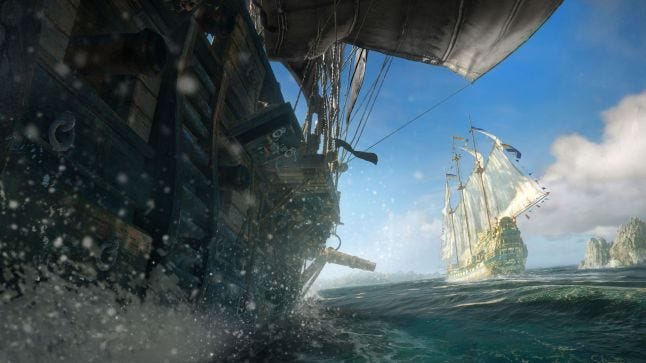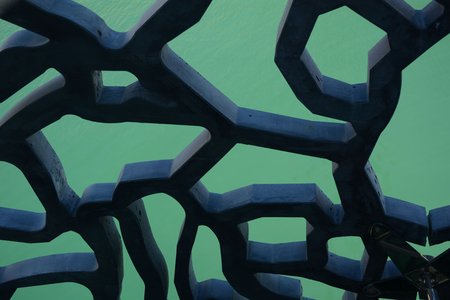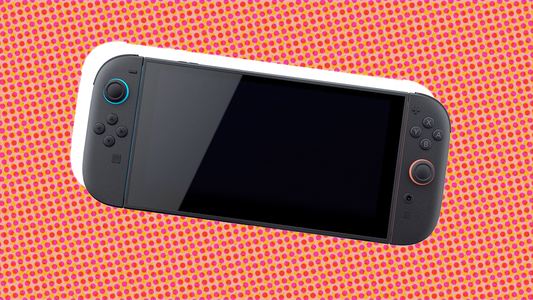The first project led by Ubisoft Singapore, Skull & Bones is a high profile attempt from Ubisoft to take on the AAA “Game as a service” market. The team has ambitious plans for a game of high seas piracy including both PVP and PVE gameplay.
Gamasutra talked to several key members of the team about the development process and their aims for the title.
***
Marlo Flor (Senior art director; previously worked on Ghost Recon Phantoms, Assassin’s Creed Syndicate/Origins)
For an art director, what’s exciting about Skull and Bones?
Marlo Flor: The biggest breakthrough that we have would be the ocean tech that we have. It started with Assassin’s Creed 3, and you’ll see some of it in Assassin’s Creed Origins as well.
"We have a dedicated artist for the water. That’s his 24/7 job. Water guy. That tells you how much we value that."
We do a lot of sharing of the water tech, just across the bridge we have few rendering guys that we work with, we do a lot of sharing and improving on the water tech that we have. Of course both games have very different requirements; in our case we focus more on how the ocean moves and how it’s rendered.
The ocean is physical; it reacts to lighting pretty much how you would expect water to react. So we have a lot of parameters that contribute to the color and transparency of the water. We don’t simply think how transparent it should be, we have several types where we can create muddy or clear water or replicate how the ocean, Indian ocean, actually, looks in terms of the color and how it changes color through depth as well. So that creates a really convincing look for the ocean. Whatever time of day you see it in.

I saw on the Origins team they have a sandbox where they’re working with different types of water; seeing how muddy water flows into clear water, and so on. That’s the kind of thing you collaborate on?
Yeah, we get parts of that. For example, if we look at the game, Origins, a lot of it is lakes and rivers and we do a lot with ocean, which is more of a flowing type of water. So in terms of collecting sediments and so on, we don’t focus too much on that, but we focus a lot on how it moves and how it creates translucency.
Also the game Skull and Bones focuses on the fantasy of being the helm of a ship, so everything that we do in terms of how we realize the visuals from that point of view. So in terms of the effects, you see the spray, how the wind blows through your sail and a lot of these little details really add up the to the experience that we want to build.
How many people do you have just working on ocean technology?
We have a fair bit of a core tech, rendering team that specializes on upgrading the water tech. We even have dedicated artists for making the water. Pretty much 24/7 that’s his job. Water guy. That tells you how much we value that part of our game.
That’s the bread and butter of the game and also more importantly we realized it from a visual perspective, but also it’s a very big part of what our gameplay is. How to manage the tides and so on are a big deal. And it’s actually one of the biggest reasons that we went for a dedicated server game, to make sure that we replicate the ocean perfectly across every single player. This creates a fair balanced game that’s always predictable on every single client. It’s a very big deal for us to create that experience.

Wind is a major gameplay factor, and it affects the ocean too?
That’s one thing that we really focused on, how do we create that feedback? Can you physically see wind when you play? That one is a pretty complex effect to achieve, because we use a lot of ingredients, for example, we have this ocean spray, that when it sprays and it hits in the wind, it actually follows the direction of the wind. You can see it on the sails, on the ship they actually turn based on the wind.
Even droplets on the screen will actually drift towards the direction of the wind, so it’s a lot of these things that we use because for example when we see the screen, almost 80% of that will be your ship. We needed to find ways on how we can communicate to the player the wind direction at any point when you’re playing since it’s an integral part of our gameplay.
What are the other ways you’re trying to solve that?
For that we needed to basically merge the art direction with gameplay; there’s a very fine line where feedback can become cartoony in a way. For example if you create wind trails that are visible to the player that does the job feedback-wise, but it doesn’t necessarily fit the art direction in a grounded game. So we’ve focused a lot on immersion. From there you need to really find a good balance between something that’s readable and something that’s believable from a player’s standpoint.
As you say, the ship takes up most of the screen, How do you deal with that, in terms of UI, in terms of helping the player see the world?
It’s a constant dialogue between art and design, everything from the construction of the ship to managing the field of view for the camera. It factors into everything related to the core gameplay. For example, when we construct the ships, it needs to have a 360 view so that when you rotate your pad, you can see what you’re doing in terms of how fast the ship moves. We need to take into account how clear the view will be when you go into your broadside for instance. So a lot of that is really us working with design to make sure that, again, the experience is immersive, but also very fluid in terms of gameplay.
***
Bill Money (Game director; previously worked on System Shock, Assassin’s Creed Origins, Deus Ex and Deus Ex: Invisible War)
I don’t know how to sail, or necessarily even really understand how a sail boat works. Yet it seems necessary to have the player understand sailing on some level for Skull & Bones to work. How are you trying to do that?
"We try to break it down into simple, intuitive directional information. The telltales of the mast, the way your captain’s coat moves in the wind, the way the spray moves."
Bill Money: Yeah, it was a big challenge and still is a big challenge. We want to make the act of sailing and the art of sailing. Because people try to master sailing their whole lives. This is something that people take on at a very young age and they do it their whole lives and they never feel they’re master at it. But we want someone to feel like they mastered our game within the first fifteen minutes of play and understand how wind works and what the points of sail are and all these very complex topics of sailing.
We try to really break it down into simple, intuitive information. The telltales of the mast, the way even your captain’s coat moves in the wind, the way the spray moves. Give these little tells to the player and then give some visuals of like the dial at the bottom of the wind gauge turns yellow when you’re going in the wrong way, it turns blue when you’re going in the right way. So just it’s like a simple sort of stop-go thing. So take these complex things, break them down into simplicity. Not make it overly complicated, but still give that feeling of mastering these big ships.

No tags.




































